Introduction
what temperature is too cold for rabbits: Rabbits, cherished for their adorable appearance and gentle demeanor, are small mammals that require attentive care to ensure their well-being and health. One crucial aspect of rabbit care is maintaining an appropriate environment, especially when it comes to temperature. Rabbits are naturally adapted to a specific climate range, and any extreme deviation from this range can lead to discomfort, health issues, and even fatalities. Understanding what temperature is considered too cold for rabbits is essential for responsible rabbit ownership, as it enables caregivers to create a safe and comfortable habitat for these furry companions. In this discussion, we will explore the temperature thresholds that rabbits can tolerate, the signs of cold stress to watch out for, and effective measures to protect rabbits from the dangers of frigid weather. By providing rabbits with a suitable living environment, we can ensure their happiness and longevity as beloved members of our households.
Rabbits, like many animals, have evolved to thrive within specific temperature ranges. In the wild, their natural habitats vary from cool temperate regions to warmer climates. This natural adaptation influences their ability to regulate their body temperature effectively. When it comes to domesticated rabbits, maintaining an appropriate temperature is crucial for their health and comfort, especially during colder months.Generally, the ideal temperature range for rabbits lies between 50 to 70 degrees Fahrenheit (10 to 21 degrees Celsius). However, temperatures below 50 degrees Fahrenheit (10 degrees Celsius) can start to become uncomfortable for rabbits, and if the temperature drops even further, it can pose serious risks to their health.
When temperatures plunge below freezing, rabbits are susceptible to cold stress and hypothermia. Symptoms of cold stress in rabbits include shivering, huddling in a tight ball, decreased activity, lethargy, and even a decrease in food and water consumption. Prolonged exposure to extremely cold conditions can lead to frostbite, respiratory issues, and other health complications.

What is the coldest temperature a rabbit can handle?
Rabbits are naturally insulated by their fur. Nature helps pet rabbits out by thickening their coats as the mercury drops and cold weather blows in. While you might not want to leave your bun out for prolonged periods in very low temperatures, rabbits can usually withstand temperatures as low as 15° Fahrenheit.
Natural Adaptations
Wild rabbits have developed certain natural adaptations that help them cope with colder temperatures. Their dense fur coat, which consists of an outer layer of guard hairs and an insulating layer of down, serves as a protective barrier against the cold. These layers trap air close to the rabbit’s body, creating a cushion of warmth. Furthermore, rabbits have the ability to control blood flow to their extremities, reducing heat loss through their ears and limbs.
Temperature Limits
Domesticated rabbits, including various breeds, have inherited some of these adaptations but may have different thresholds when it comes to cold tolerance. Generally, rabbits are more comfortable in temperatures ranging from 50 to 70 degrees Fahrenheit (10 to 21 degrees Celsius). However, their ability to handle colder temperatures varies. Smaller breeds, such as the Netherland Dwarf, may be more susceptible to cold than larger breeds due to their relatively higher surface area-to-volume ratio.
As the temperature drops, rabbits start to feel discomfort and stress. They will exhibit signs of discomfort, such as shivering, huddling together, and seeking shelter. When the temperature becomes extreme, rabbits might experience hypothermia, a condition where their body temperature drops dangerously low, leading to lethargy and even death.
Protection and Precautions
Pet rabbits that reside indoors are generally shielded from the harsh elements and can handle colder temperatures better than their outdoor counterparts. However, even indoor rabbits can experience discomfort if the temperature drops significantly. It’s important to keep them away from drafts and sudden temperature changes. Providing warm bedding, such as blankets and straw, can offer extra insulation during colder periods.
Outdoor rabbits require additional protection during colder months. Their enclosures should be well-insulated and sheltered from wind and moisture. Using heat lamps or heated pads can help maintain a comfortable temperature within their living spaces. It’s crucial to monitor the weather and take precautions when temperatures approach the lower limits of a rabbit’s comfort zone.
What temperature is too cold for rabbits Celsius?
They can easily tolerate wintry periods with temperatures down to -10°C. However, they must be able to prepare! Make sure your rabbit has already lived outside in the summer and autumn months, so that it can fully develop its winter coat. Thanks to this extra coat they are protected against the cold temperatures.
Adaptations to Cold
Wild rabbits are equipped with a variety of natural adaptations that enable them to cope with colder temperatures. Their fur coat is a paramount asset, consisting of two layers: the outer guard hairs and the insulating down layer beneath. This arrangement traps air close to the rabbit’s body, forming a layer of warmth. Additionally, rabbits can regulate blood flow to their extremities, limiting heat loss through their ears and limbs.
Threshold of Cold
The capacity of rabbits to tolerate colder temperatures is contingent on various factors. Generally, rabbits are most comfortable when the temperature ranges between 10 to 21 degrees Celsius (50 to 70 degrees Fahrenheit). Nonetheless, this threshold can fluctuate based on the breed and size of the rabbit. Smaller breeds, like the Netherland Dwarf, might be more sensitive to the cold due to their larger surface area relative to their body volume.
When temperatures plummet, rabbits begin to exhibit signs of discomfort. They may huddle together, shiver, and seek refuge in search of warmth. As the cold intensifies, the risk of hypothermia increases – a condition in which a rabbit’s body temperature drops perilously low, causing lethargy and potentially leading to mortality.
Precautions and Safeguards
For indoor rabbits, the environment is usually more controlled, offering protection against extreme temperatures. Nevertheless, even indoor rabbits can be affected by temperature fluctuations. Ensuring that they are kept away from drafts and abrupt temperature changes is imperative. Providing cozy bedding, such as blankets or straw, can offer supplementary insulation during colder periods.
Outdoor rabbits, on the other hand, require heightened protection in cold weather. Their enclosures should be designed to insulate against the cold, shielding them from wind and dampness. Utilizing heat lamps or heated pads can help maintain a favorable temperature within their living quarters. Vigilance towards weather forecasts and taking necessary precautions when temperatures approach the lower limit of their comfort zone is pivotal.
Is 2 degrees too cold for a rabbit?
A temperature of between 10-20°C is recommended as ideal for domestic rabbits, though they can cope with lower temperatures, but tend to suffer from too much heat. If the temperature starts to reach freezing, you may wish to consider moving your rabbits’ home indoors or into an outhouse, shed or unused garage.
Natural Adaptations and Comfort Zone
Wild rabbits boast a suite of natural adaptations that empower them to cope with colder temperatures. Their thick fur coat, consisting of guard hairs and an insulating layer of down, acts as a protective barrier against the cold. These layers trap air close to the rabbit’s body, creating a cushion of warmth. Moreover, rabbits can control blood flow to their extremities, reducing heat loss through their ears and limbs.
Typically, rabbits are most comfortable within a temperature range of 10 to 21 degrees Celsius (50 to 70 degrees Fahrenheit). This range can vary based on the rabbit’s size, breed, and health. Smaller breeds, such as the Netherland Dwarf, might be more sensitive to the cold due to their relatively larger surface area in proportion to their body volume.
The Threshold of Cold Discomfort
When temperatures drop to 2 degrees Celsius, rabbits are likely to feel discomfort and stress. They might display behaviors such as huddling together, shivering, and seeking shelter. As the cold becomes more intense, the risk of hypothermia, a condition where a rabbit’s body temperature drops to dangerous levels, increases. Hypothermia can lead to lethargy, compromised immune function, and even death if not addressed promptly.
Protective Measures for Rabbits in Cold Weather
For indoor rabbits, the environment is usually better controlled, providing some protection against extreme temperatures. However, even indoor rabbits can be affected by temperature fluctuations. It’s crucial to shield them from drafts and abrupt temperature changes. Offering cozy bedding and ensuring they have a warm and comfortable shelter can help mitigate the effects of cold weather.
Outdoor rabbits require extra attention during cold months. Their enclosures should be well-insulated and sheltered from wind and moisture. Providing additional warmth through heat lamps or heated pads can help maintain a suitable temperature within their living space. Monitoring weather forecasts and taking precautions when temperatures approach the lower limits of their comfort zone is vital to their well-being.
How cold of temperatures can bunnies survive?
Rabbits typically do well in colder temperatures. Rabbits stop shedding their fur during the fall and grow a thick fur coat that keeps them warm in the winter. They are relatively comfortable in temperatures as low as 32 degrees.
Natural Adaptations and Comfort Zone
In the wild, bunnies have evolved a range of natural adaptations that enable them to endure colder temperatures. Their fur coat, comprised of guard hairs and an insulating layer of down, acts as a barrier against the cold. These layers trap air close to the bunny’s body, forming a cocoon of warmth. Additionally, bunnies possess the ability to regulate blood flow to their extremities, minimizing heat loss through their ears and limbs.
The comfort zone for bunnies typically spans temperatures between 10 to 21 degrees Celsius (50 to 70 degrees Fahrenheit). However, this range can vary based on the bunny’s breed, size, and overall health. Smaller breeds, such as the Netherland Dwarf, might be more susceptible to the cold due to their relatively larger surface area compared to their body volume.
The Threshold of Survivability
When temperatures plummet to extreme lows, bunnies begin to display signs of discomfort. They may huddle together, shiver, and seek shelter to keep warm. As the cold intensifies, the risk of hypothermia becomes a concern. Hypothermia occurs when a bunny’s body temperature drops perilously low, leading to lethargy, compromised immunity, and even potential mortality if not addressed in time.
Protective Measures for Bunnies in Cold Weather
For indoor bunnies, the controlled environment typically offers protection against drastic temperature fluctuations. However, it’s essential to shield them from drafts and sudden temperature changes. Furnishing them with warm bedding and ensuring their living area is cozy can help mitigate the impact of colder weather.
Outdoor bunnies require even greater attention during colder seasons. Their enclosures should be well-insulated and safeguarded against wind and moisture. Additional warmth can be provided through heat lamps or heated pads, maintaining a suitable temperature within their living space. Regular monitoring of weather forecasts and taking necessary precautions when temperatures approach the lower end of their comfort range is crucial for their welfare.
Are rabbits weak of cold?
Rabbits don’t do well in cold weather, and snowy conditions can put them at risk. Unlike other small animals, rabbits don’t hibernate so keeping them warm, dry and protected from the elements is crucial.
Natural Adaptations and Cold Resilience
Contrary to popular belief, rabbits are not inherently weak when it comes to cold temperatures. In fact, they have evolved a range of natural adaptations that enable them to cope with various climates. One of their most significant assets is their fur coat, which consists of guard hairs and an insulating layer of down. These layers trap air close to the rabbit’s body, creating a layer of warmth and protection against the cold. Additionally, rabbits have the ability to regulate blood flow to their extremities, reducing heat loss and conserving energy.
Comfort Range and Tolerance
Rabbits exhibit a comfort zone for temperatures typically spanning 10 to 21 degrees Celsius (50 to 70 degrees Fahrenheit). However, this range can vary based on factors such as species, breed, age, and health. Smaller breeds may be more sensitive to cold due to their higher surface area-to-volume ratio.
Rabbits might show signs of discomfort as temperatures drop. They could huddle together, shiver, and seek shelter to retain warmth. When the cold becomes more severe, there is a risk of hypothermia – a condition where a rabbit’s body temperature drops dangerously low, resulting in lethargy and potential health complications.
Protective Measures and Care
It’s important to understand that while rabbits have natural adaptations, extreme cold can still impact their well-being. Indoor rabbits are shielded from the elements to some extent, but they can also be affected by temperature fluctuations. Outdoor rabbits require extra care during colder months. Their enclosures should be designed to insulate against the cold, protecting them from wind and moisture. Providing additional warmth through heat lamps or heated pads can help maintain a comfortable temperature within their living space.
How do I keep my rabbit warm at night?
Placing a cardboard box filled with straw in the hutch makes a super-warm and insulated sleeping area and is easy to replace. You can also put a couple of these in the run. The hutch needs to be cleaned out scrupulously and regularly, so your rabbits are never sitting on a damp or soggy surface.
Indoor Housing: If possible, bring your rabbit indoors during chilly nights. Indoor housing offers better temperature control and protection from harsh weather conditions. A climate-controlled environment helps maintain a stable temperature range, ensuring your rabbit’s comfort.
Insulated Enclosures: For outdoor rabbits, ensure their enclosure is well-insulated. Use materials like wood or plastic that can shield your rabbit from the wind and cold. Provide a cozy shelter within the enclosure where your rabbit can retreat to stay warm.
Bedding: Select appropriate bedding to provide insulation. Straw, hay, or fleece blankets are excellent choices. Line the enclosure or shelter with a thick layer of bedding, creating a comfortable and warm surface for your rabbit to rest on.
Heat Pads or Mats: Consider using heated pads or mats specifically designed for pets. These devices offer controlled warmth, helping your rabbit regulate their body temperature. Place them beneath bedding or in the sheltered area of the enclosure.
Snuggle Items: Introduce soft, warm snuggle items like blankets or stuffed toys to your rabbit’s sleeping area. These items can provide additional insulation and a sense of security, contributing to their comfort.
Enclosure Placement: Position the enclosure in a location that minimizes exposure to cold drafts and ensures protection from wind and moisture. Shielding the enclosure from the elements helps maintain a more stable temperature.
Do rabbits need a heat lamp?
Depending on the outside temperature, rabbits may need a heat lamp. It must however be properly installed and used. Self-heating pads can also provide a good heat source but be aware they must be continually reheated.
Benefits of Heat Lamps
Controlled Warmth: Heat lamps provide a controlled source of warmth, which can be particularly useful during colder seasons or chilly nights. This warmth can help rabbits regulate their body temperature and prevent discomfort.
Protection for Vulnerable Rabbits: Certain rabbits, such as newborns, young kits, sick or elderly individuals, may be more susceptible to cold and might benefit from additional warmth to avoid health issues.
Outdoor Enclosures: For rabbits kept in outdoor enclosures, heat lamps can play a crucial role in providing a consistent and warm environment. They can help prevent temperature drops that could lead to discomfort or health problems.
Considerations and Precautions
Fire Hazard: One of the primary concerns with heat lamps is the risk of fire. Straw, hay, bedding, or other materials in the enclosure could easily catch fire if the lamp is not properly secured or malfunctions.
Temperature Regulation: It’s important to monitor the temperature closely and ensure that the heat lamp does not make the enclosure too hot. Rabbits should always have the option to move away from the heat source if they become too warm.
Safety Measures: If you decide to use a heat lamp, ensure it is securely installed, away from flammable materials, and inaccessible to the rabbits. Regularly inspect the lamp and its wiring for any signs of damage.
Consult a Veterinarian: Before introducing a heat lamp, especially for rabbits with specific health conditions, consult a veterinarian for guidance. They can provide insights into your rabbit’s specific needs and offer advice on maintaining optimal comfort.
Alternatives to Heat Lamps
There are alternative methods to keep rabbits warm without resorting to heat lamps. These include providing insulated enclosures, using heated mats or pads, offering plenty of warm bedding, and ensuring the rabbits have a sheltered area where they can escape cold drafts.
Do rabbits freeze when scared?
You should be able to recognise signs of stress in your rabbit. Signs of stress may include: appearing nervous (freezing, hunched up with ears flat against the body) being excessively jumpy and watchful (bulging eyes)
Tonic Immobility: The Freeze Response
Tonic immobility is a phenomenon observed not only in rabbits but also in various other animals, including some birds and reptiles. It is a state of temporary paralysis or immobilization that occurs when an animal perceives a threat or danger. Instead of fleeing or fighting, the animal enters a state of apparent paralysis, often lying motionless on the ground. This behavior is commonly referred to as the “freeze response.”
Possible Reasons for Freezing
Predator Evasion: The freeze response is believed to have evolved as a survival strategy. When faced with a potential predator, freezing can sometimes help rabbits escape detection. Some predators rely on movement to identify prey, so a motionless rabbit might go unnoticed.
Camouflage: In certain environments, such as areas with low vegetation, freezing can allow rabbits to blend in with their surroundings, providing a form of camouflage that reduces the likelihood of being detected by predators.
Predator Confusion: The sudden lack of movement might confuse predators, making it more difficult for them to identify the rabbit as prey. This confusion could give the rabbit an opportunity to escape if the predator loses interest or becomes uncertain about the situation.
Temporary Aversion: The freeze response might also deter some predators. If a predator is unfamiliar with a prey animal’s reaction, it might become cautious or wary, giving the prey a chance to survive.
Physiological Mechanisms
The exact mechanisms behind tonic immobility are not fully understood. It is believed that this response might be triggered by the animal’s nervous system in moments of extreme stress. The freeze response might be a result of the animal’s body entering a state of shock, which temporarily inhibits voluntary movement.
Observations and Ethical Considerations
Observing tonic immobility in rabbits can be a distressing experience for pet owners. It’s important to note that this behavior is involuntary and not a conscious choice made by the rabbit. It’s advised not to intentionally induce tonic immobility in rabbits, as it can cause stress and potentially have negative psychological effects.
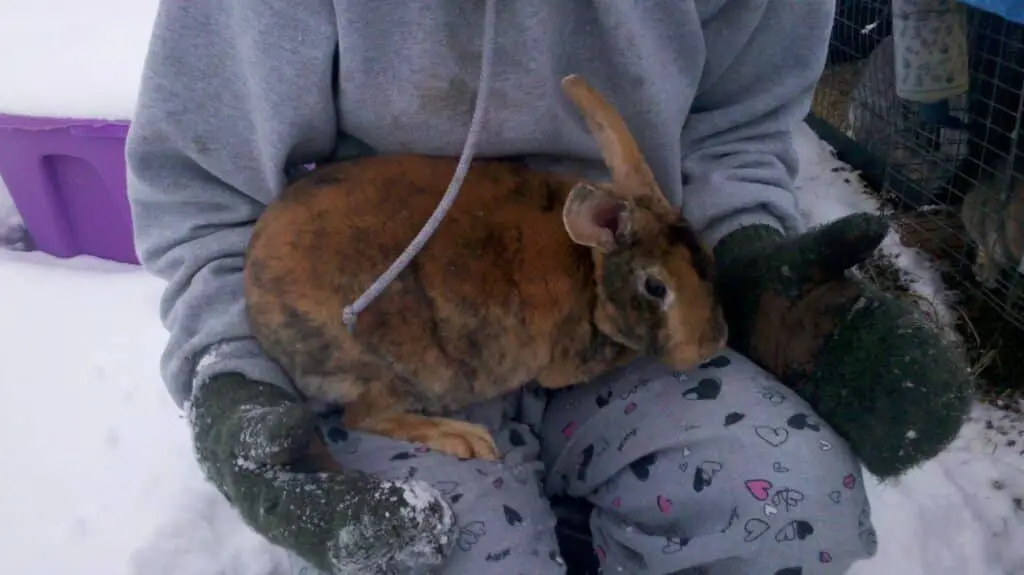
Conclusion
Understanding the temperature thresholds that rabbits can tolerate is a fundamental aspect of responsible rabbit care. While these adorable creatures possess some resilience to colder temperatures, it’s essential to be aware of the risks associated with exposing them to excessively cold conditions. Rabbits are most comfortable within the range of 50 to 70 degrees Fahrenheit (10 to 21 degrees Celsius), and temperatures below 50 degrees Fahrenheit (10 degrees Celsius) can start to be problematic.
Recognizing the signs of cold stress in rabbits, such as shivering and lethargy, is crucial for timely intervention. By providing appropriate shelter, bedding, and additional warmth, rabbit owners can mitigate the risks posed by colder weather. Creating a safe and comfortable environment for rabbits ensures not only their physical well-being but also their overall quality of life.
As responsible caregivers, it is our duty to prioritize the welfare of these beloved pets and make informed decisions to keep them safe from the hazards of extreme cold. By adhering to recommended temperature guidelines and monitoring our rabbits’ behavior closely during colder periods, we can foster a strong bond with our furry companions and ensure their happiness and health throughout all seasons.

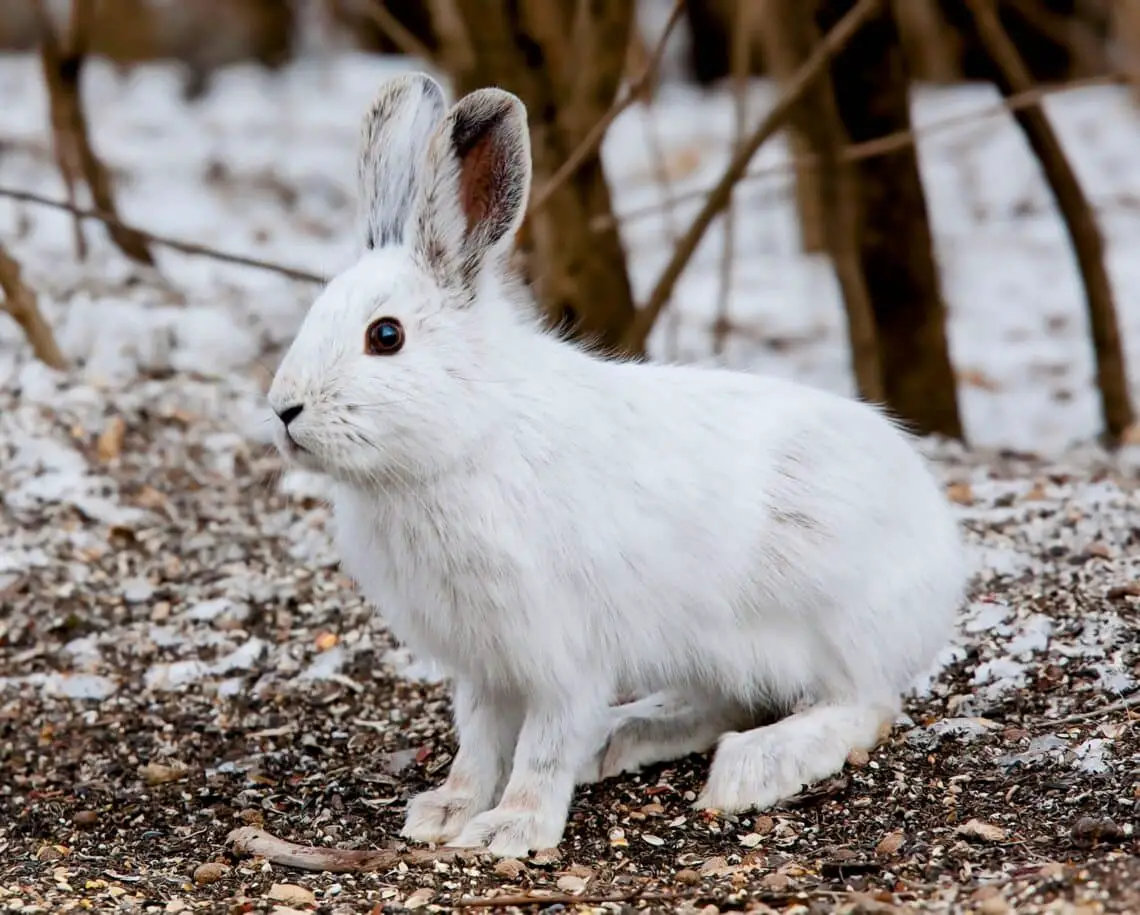
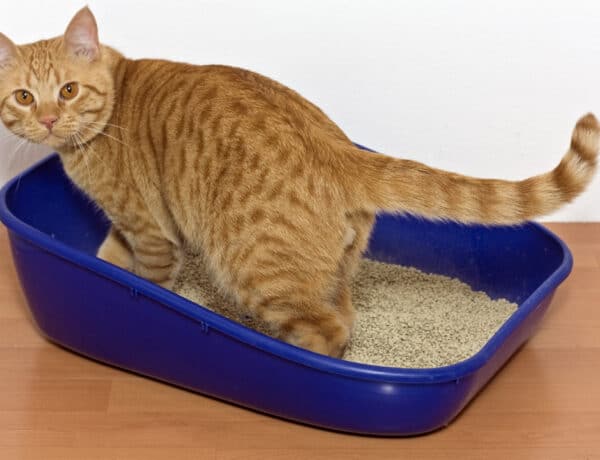
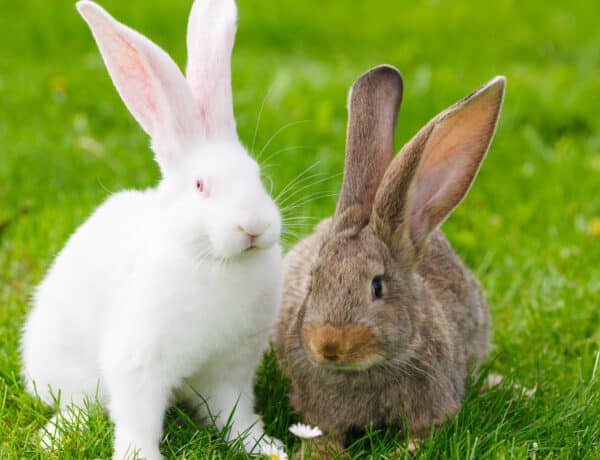
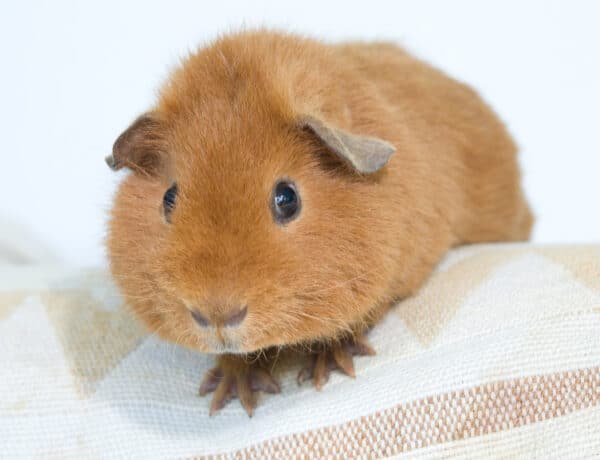
No Comments